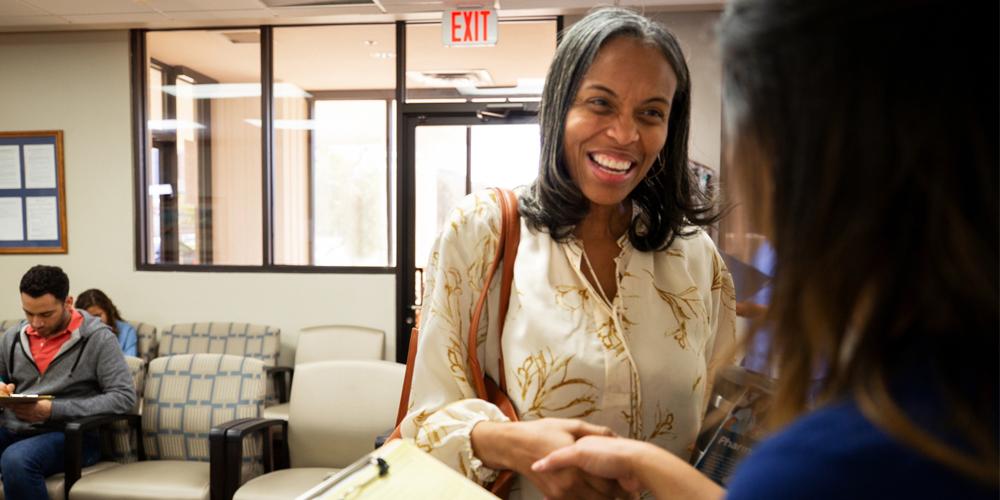How the pandemic energized the fight for health equity
COVID forced governments, healthcare systems, and companies to innovate at record speed; that momentum could power us into a more equitable recovery.
Sometimes it takes a crisis to drive change.
The shock of seeing longstanding global health inequities worsening health, economic, and social outcomes in the most vulnerable communities during the COVID-19 pandemic spurred creative thinking and innovative solutions to address those gaps.
This momentum provides a unique opportunity for the global healthcare system, along with governments and the private sector, to build on the advances achieved during the crisis and apply them to other diseases and the social determinants that drive health inequity. As outlined in our report Closing the Health Equity Gap, the pandemic experience has provided four key lessons that can shape this effort: (1) collecting and analyzing data must be the first step; (2) approaches should be tailored to the community; (3) digital technology is an essential tool; and (4) partnerships amplify impact.
COVID sparked unprecedented efforts to collect and analyze data to understand the disease, track its spread, develop treatments, and evaluate their efficacy. A case in point is the data-sharing agreement between Pfizer and Israel. It enabled the collection and analysis of real-world evidence that not only showed the Pfizer vaccine’s efficacy but continues to deliver insights that inform our understanding of the virus and vaccination and help shape public policy.
The data know-how acquired and deployed during the pandemic has applications well beyond COVID. Healthcare players can—and are already beginning to—put data to work to discover where disparities exist so that outreach and response efforts can target communities in need and track how well the resulting initiatives work.
The data know-how acquired and deployed during the pandemic has applications well beyond COVID.
The rapid spread of disinformation about the virus, coupled with vaccine hesitancy—much of it stemming from the skepticism that past unethical medical research had instilled in many minority communities—made it clear early on that community engagement would be necessary to build trust among marginalized populations. That kind of engagement was essential in making sure accurate information, testing, and vaccination services reached the most vulnerable. From pro-vaccine social media campaigns aimed at the Maori in New Zealand to vaccination trucks sent into underserved areas in Brazil, a host of tailored community-engagement initiatives sprung up during the pandemic.
Such initiatives have enormous potential to improve health outcomes in a variety of contexts. For example, patient advisory panels can help pharmaceutical companies identify and overcome potential access barriers among certain patient populations as early as the product-development stage. A public health initiative targeting obesity could partner with local gyms or grocery stores.
Perhaps the most obvious consequence of the pandemic was the rapid acceptance and use of virtual healthcare. Another was pharmaceutical companies shifting toward remotely conducted drug trials. In both cases, the pandemic-induced adoption of digital technologies has ramifications that extend well beyond COVID, enabling rural and underserved communities to gain access to care and participate in clinical trials.
These digital technologies’ full potential can be achieved only if vulnerable populations can afford access to them. This is a perfect example of how social determinants, in this case income and access to high-speed networks, can feed health inequity.
No single organization can tackle these inequities on its own. Here again, the pandemic has illuminated the way forward: partnerships. Take the unprecedented collaboration between governments and the pharmaceutical industry that resulted in the rapid development of COVID vaccines. Or consider the outside-the-box thinking that allowed businesses to deploy their skills and resources in conjunction with partners in healthcare and other industries so that vulnerable communities could receive personal protective equipment (PPE) and COVID tests, treatments, and vaccines. In Australia, for example, a mining company used its supply chain infrastructure to deliver hand sanitizer and face masks to remote towns. In the US, a ride-share company offered free rides to vaccine appointments for people without transportation. Outside the pandemic context, these kinds of innovative, socially oriented solutions can offer organizations the opportunity to develop new ways to deliver on environmental, social, and governance (ESG) promises.
Tackling health inequity, and the social determinants that drive it, requires investment, but doing so will ultimately deliver enormous returns—in the form of better individual health, a more productive workforce, and a reduced economic burden from chronic disease thanks to improved access to healthcare products and services.
The pandemic illustrated that health equity isn’t just nice to have; it’s essential to a well-functioning society and economy. Building the creative thinking and innovations sparked by the pandemic into our ongoing recovery would not just improve human health but help the world emerge stronger socially and economically. And it would put us in a better position to lessen the impact of future public health crises, no matter their origin.
Author profiles:
- Ron Chopoorian is global health industries leader for PwC. Based in New Jersey, he is a partner with PwC US.
- Sarah Butler is global health services leader for PwC. Based in Sydney, she is a partner with PwC Australia.





